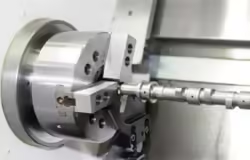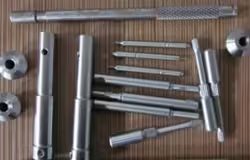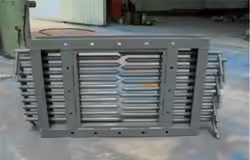
SAE 1055 Steel vs SAE 52100 Steel Comparison Guide
Table of Contents
Introduction
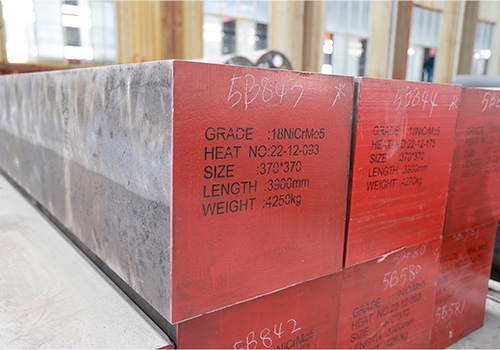
In the world of industrial materials, choosing the right steel grade determines the performance, durability, and cost-efficiency of a product.
Two commonly discussed options — SAE 1055 steel vs SAE 52100 steel — represent different steel families: a medium carbon steel versus a high-carbon chromium bearing steel.
Understanding their distinctions helps manufacturers and engineers make informed decisions about machinability, strength, and application suitability.
Understanding the SAE Steel Numbering System

The Meaning Behind “SAE”
The Society of Automotive Engineers (SAE) established a standardized system to classify steels based on their chemical composition and alloying elements.
This system ensures uniformity, compatibility, and quality control across global industries, allowing engineers to easily identify and compare steel types for specific applications.
How the Numbering Works
The SAE steel numbering format consists of four digits (sometimes five), each with a specific meaning:
- The first two digits indicate the steel type or alloying element group (e.g., plain carbon, nickel, chromium).
- The last two digits represent the average carbon content, expressed as hundredths of a percent.
For example:
- SAE 1055 → “10” means plain carbon steel, and “55” indicates approximately 0.55% carbon.
- SAE 52100 → “52” means a chromium alloy steel, and “100” stands for about 1.00% carbon.
This system provides a fast way to interpret a steel’s composition, behavior during processing, and typical performance range.
What Is SAE 1055 Steel?
SAE 1055 steel is a medium-carbon plain steel containing roughly 0.55% carbon and 0.60–0.90% manganese, with very little alloying content.
It offers a balanced combination of strength, toughness, and machinability, making it ideal for applications that experience impact or bending stress.
Typical characteristics include:
- Excellent response to heat treatment (quenching and tempering)
- Moderate hardness with good ductility
- Suitable for shafts, gears, springs, and general mechanical parts
Because of its simplicity and affordability, SAE 1055 is a common choice for automotive and industrial machinery components where high wear resistance is not the primary concern.
What Is SAE 52100 Steel?
SAE 52100 steel is a high-carbon chromium alloy steel containing about 1.00% carbon and 1.30–1.60% chromium.
It’s one of the most well-known bearing steels in the world, designed specifically for applications requiring exceptional hardness, wear resistance, and dimensional stability.
Key properties include:
- Extremely high hardness after proper heat treatment (up to HRC 66)
- Excellent fatigue and wear resistance
- High purity and cleanliness for long service life in precision parts
Commonly used in rolling-element bearings, precision shafts, and tools, SAE 52100 offers the consistency and durability demanded by automotive, aerospace, and industrial sectors.
Concept Summary: Why the SAE System Matters
The SAE numbering system simplifies communication between engineers, suppliers, and manufacturers.
By decoding a grade like SAE 1055 or SAE 52100, you instantly understand the steel’s composition, its mechanical potential, and its best-fit applications — without needing to memorize complex chemical formulas.
Chemical Composition: The Foundation of Steel Performance
Elemental Comparison Overview
| Element | SAE 1055 Steel | SAE 52100 Steel | Function |
|---|---|---|---|
| Carbon (C) | 0.50–0.60% | 0.95–1.10% | Determines hardness and strength |
| Chromium (Cr) | — | 1.30–1.60% | Enhances wear and corrosion resistance |
| Manganese (Mn) | 0.60–0.90% | 0.25–0.45% | Improves toughness |
| Silicon (Si) | 0.15–0.30% | 0.15–0.35% | Boosts elasticity and strength |
| Sulfur & Phosphorus | ≤0.05% | ≤0.025% | Controlled for cleanliness and machinability |
Concept: Carbon Defines Hardness
The carbon content difference is the most significant distinction between SAE 1055 and SAE 52100.
Higher carbon means higher achievable hardness — but also lower ductility and weldability.
Mechanical Properties and Performance
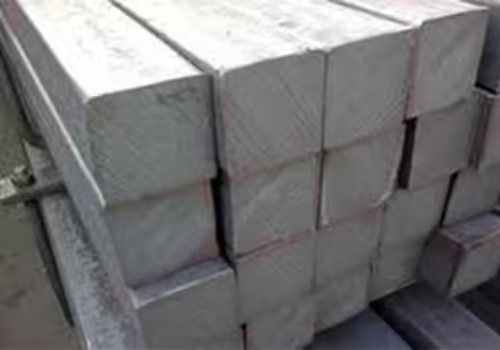
Strength and Toughness
- SAE 1055 steel offers a strong balance of strength and resilience, performing well under shock or bending loads.
- SAE 52100 steel achieves superior hardness and wear resistance, suitable for precision components that endure continuous rolling or contact stress.
Heat Treatment Effects
After quenching and tempering, SAE 1055 can reach around HRC 50–55 hardness, maintaining useful ductility.
SAE 52100, on the other hand, can be hardened up to HRC 66, developing a fine martensitic structure ideal for high-load rolling applications.
Midpoint Comparison Table: Key Engineering Parameters
| Property | SAE 1055 Steel | SAE 52100 Steel | Engineering Insight |
|---|---|---|---|
| Steel Type | Plain medium-carbon | High-carbon chromium alloy | Defines intended application field |
| Tensile Strength (MPa) | 750–900 | 1000–1250 | Indicates resistance to stretching and failure |
| Yield Strength (MPa) | ~450 | ~850 | Determines load-carrying capacity before deformation |
| Elongation (%) | 12–20 | 5–10 | Reflects ductility and toughness |
| Hardness (HRC) | 45–55 | 60–66 | Higher hardness = greater wear resistance |
| Fatigue Strength (MPa) | ~300 | ~600 | Affects durability in rotating or cyclic loads |
| Machinability | Good | Moderate to poor | High carbon steels are harder to machine |
| Cost Level | Lower | Higher | Chromium content and purity increase cost |
Concept Breakdown: What Each Property Means
Tensile Strength
Tensile strength measures the maximum force a steel can withstand before it fractures.
In the comparison of SAE 1055 Steel vs SAE 52100 Steel, the latter generally offers higher tensile strength due to its elevated carbon and chromium content. This makes SAE 52100 ideal for load-bearing applications such as precision shafts, bearings, and high-stress machinery components.
Meanwhile, SAE 1055 Steel, with its moderate carbon content, provides sufficient tensile strength for general engineering parts while offering more flexibility in components that may experience bending or torsional stress.
Yield Strength
Yield strength defines the point at which a material starts to deform permanently.
When considering SAE 1055 Steel vs SAE 52100 Steel, SAE 1055 begins to yield at a lower stress level, giving it an advantage in dynamic load environments where slight deformation is acceptable without catastrophic failure.
SAE 52100, on the other hand, maintains higher yield strength, which is critical for components that must retain their original shape under constant or cyclic heavy loads.
Hardness and Wear Resistance
Hardness determines a steel’s ability to resist surface indentation and abrasion, which directly affects wear resistance.
In the SAE 1055 Steel vs SAE 52100 Steel comparison, SAE 52100 is significantly harder after proper heat treatment, often reaching HRC 60–66, while SAE 1055 typically reaches HRC 50–55.
This hardness advantage makes SAE 52100 the steel of choice for rolling bearings, high-speed spindles, and cutting dies, while SAE 1055 is better suited for parts requiring toughness and impact resistance.
Real-World Example: Automotive Manufacturing Case
Crankshaft vs Bearing Application
In a mid-sized automotive plant, engineers had to select steels for two critical components: engine crankshafts and wheel hub bearings.
For crankshafts, the steel needed to be tough, cost-effective, and resistant to torsional stress. SAE 1055 met these requirements perfectly. It allowed the components to withstand repeated torque without cracking, while also being relatively easy to machine and heat treat.
For wheel hub bearings, the main challenge was long-term wear resistance and dimensional stability under continuous rotation. SAE 52100 was chosen because its high carbon and chromium content provided exceptional hardness and fatigue strength, extending bearing life significantly.
This case highlights how SAE 1055 Steel vs SAE 52100 Steel can coexist in the same product ecosystem, each fulfilling a role optimized for its mechanical properties.
Heat Treatment in Practice
Treating SAE 1055 Steel
SAE 1055 steel is typically austenitized at 820–870°C, followed by oil quenching and tempering in the 400–600°C range.
This process produces a resilient microstructure, combining toughness and hardness, making SAE 1055 ideal for shafts, gears, springs, and automotive components where dynamic stress resistance is critical.
Treating SAE 52100 Steel
For SAE 52100 steel, the heat treatment is more precise. The steel is heated to 830–870°C, then oil-quenched and tempered at 150–200°C.
The resulting microstructure is fine martensite with retained austenite, offering maximum hardness and wear resistance. This makes SAE 52100 perfect for precision bearings, spindles, and cutting tools, where both surface durability and fatigue strength are essential.
Concept: Heat Treatment Shapes Performance
When evaluating SAE 1055 Steel vs SAE 52100 Steel, heat treatment is the key factor that unlocks the full potential of each grade.
SAE 1055 emphasizes toughness and resilience, making it versatile for general mechanical parts. SAE 52100 emphasizes hardness and wear resistance, making it indispensable in high-precision and high-stress applications.
Practical Insights for Engineers
Balance of cost and performance: SAE 1055 is more cost-effective for general parts, whereas SAE 52100 offers long-term performance for critical, high-precision components.ted to 830–870°C, oil-quenched, and tempered between 150–200°C.
The microstructure transforms into fine martensite with retained austenite, providing hardness and wear resistance ideal for precision bearings.
Component type matters: Use SAE 1055 for shafts, springs, and impact tools; use SAE 52100 for bearings, precision rollers, and high-wear machinery parts.
Heat treatment consistency: Proper quenching and tempering are critical to achieving the desired mechanical properties in both steels.
Applications: Where Each Steel Excels
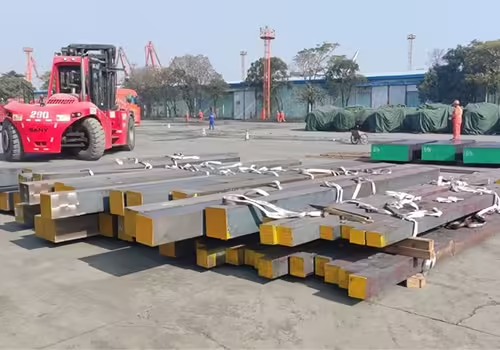
SAE 1055 Steel in Machinery Shafts and Axles
SAE 1055 is widely used for medium-load shafts and axles due to its excellent toughness and impact resistance. Its moderate carbon content allows the steel to withstand torsional and bending stresses without cracking.
SAE 1055 Steel in Hand Tools and Agricultural Equipment
The steel’s combination of strength and machinability makes it ideal for hammers, plowshares, and spades. These tools benefit from SAE 1055’s ability to endure repeated impacts while remaining durable.
SAE 1055 Steel for Springs and Blades
Compression and tension springs, as well as heavy-duty blades, utilize SAE 1055 because of its elasticity and resilience. Heat treatment enhances its hardness while retaining flexibility for dynamic applications.
SAE 1055 Steel in Automotive Components
Crankshafts, connecting rods, and gears in automotive engines are often manufactured from SAE 1055. The steel’s balance of strength, wear resistance, and cost-efficiency makes it suitable for general automotive mechanical parts.
SAE 52100 Steel in Ball and Roller Bearings
SAE 52100 is the global standard for bearing components due to its high hardness and wear resistance. Bearings made from this steel maintain precise tolerances under millions of load cycles.
SAE 52100 Steel in High-Precision Mechanical Parts
Precision shafts, spindles, and rollers depend on SAE 52100 for dimensional stability and fatigue resistance. Its clean alloy composition ensures consistent performance in demanding machinery.
SAE 52100 Steel for Cutting Dies and Measuring Tools
The steel’s exceptional wear resistance and ability to retain hardness at elevated temperatures make it perfect for punches, dies, and metal-forming instruments. It ensures long-term precision in industrial applications.
SAE 52100 Steel in Aerospace and Automotive High-Performance Components
High-carbon chromium alloying enables SAE 52100 to perform in aerospace bearings and high-speed automotive rollers. Its hardness and fatigue strength allow components to endure extreme loads while maintaining accuracy.
Choosing Between SAE 1055 and SAE 52100
When selecting a steel grade, consider mechanical requirements, expected load, and environmental conditions.
Choose SAE 52100 for parts requiring maximum wear resistance, precision, and hardness.
Choose SAE 1055 for components needing toughness, moderate hardness, and cost efficiency.
Conceptual Comparison: Function vs. Performance
Function-Oriented Steel (SAE 1055)
Focuses on impact absorption, resilience, and cost-effectiveness.
Ideal when the goal is durability with flexibility.
Performance-Oriented Steel (SAE 52100)
Engineered for wear resistance and dimensional stability.
Best when precision and longevity are critical performance indicators.
Related Concepts and Terminology
Bearing Steel
A high-purity, high-carbon alloy designed for long fatigue life and minimal deformation — SAE 52100 is the global benchmark.
Carbon Steel
A steel that relies mostly on carbon and manganese for strength — SAE 1055 represents this class, widely used in general construction and mechanical parts.
Martensitic Transformation
A phase change in steel during quenching that forms a hard microstructure — both 1055 and 52100 utilize this process, but 52100 forms a finer, harder martensite.
Summary: Key Takeaways on SAE 1055 vs SAE 52100
The difference between SAE 1055 steel vs SAE 52100 steel comes down to composition, hardness, and intended use.
- SAE 1055: Medium-carbon steel with good toughness, affordability, and versatility.
- SAE 52100: High-carbon chromium steel known for outstanding hardness, fatigue strength, and dimensional precision.
Both are reliable materials — the best choice depends on whether your project prioritizes toughness or wear resistance.
FAQ
Is SAE 1055 steel good for knives or blades?
Yes. SAE 1055 offers excellent impact resistance and is often used for machetes, swords, and heavy-duty knives, though it requires oiling to prevent rust.
Is SAE 52100 stainless steel?
No. Despite its chromium content, it doesn’t reach the 12% threshold for stainless classification, but it does resist wear extremely well.
Can SAE 52100 be welded safely?
It can be welded, but careful preheating and post-weld heat treatment are required to avoid cracking due to its high carbon level.
What is the typical hardness of SAE 1055 after quenching?
After proper heat treatment, it reaches about HRC 50–55, maintaining a strong balance between hardness and impact resistance.
Which steel is better for bearing applications?
SAE 52100 is the standard choice worldwide for ball and roller bearings because of its consistent hardness and high fatigue strength.
What are the main differences between 1055 and 1095 steel?
1055 contains less carbon, providing more toughness but less edge retention than 1095, making it better for tools that endure impact.
Need Expert Selection Advice?
Choosing the right material can significantly affect product performance and cost.
💬 Need specific selection guidance or material sourcing? Contact our engineers today for tailored recommendations on SAE 1055 and SAE 52100 steel grades.




